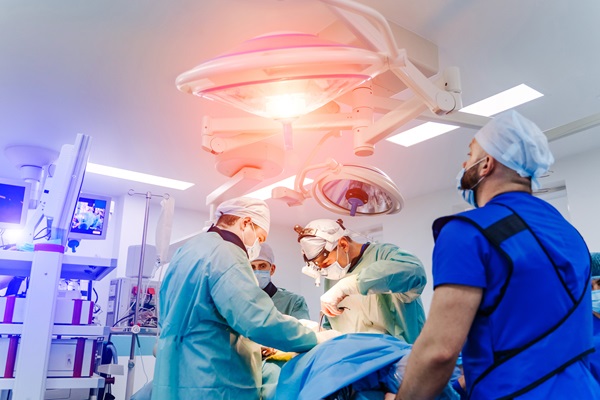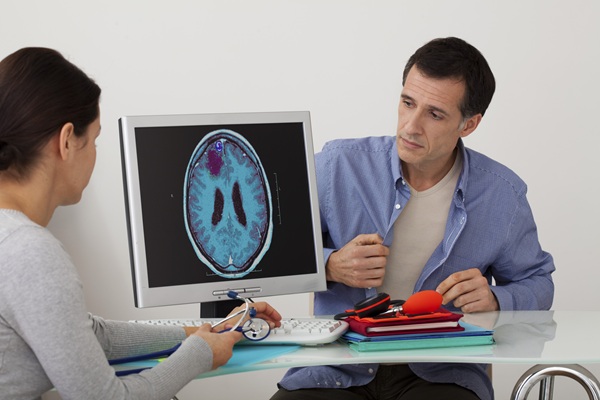Five Most Common Procedures in Neurosurgery

The Journal of neurosurgery states that about 12.8 million people worldwide require neurosurgery treatments yearly. The term "neurosurgery" refers to surgical treatments performed on the central nervous system, which consists of the spinal column, spine, and brain.
These procedures might be recommended to treat various issues like herniated discs, spinal cord disorders, and nerve pain. A doctor who specializes in diagnosing and surgically treating issues that affect the central nervous system is called a neurosurgeon.
The most common neurosurgery treatments
A neurosurgeon might recommend a wide range of treatments based on a patient's specific symptoms. Some of the more commonly performed treatments in neurosurgery include:
1. Lumbar puncture
Commonly known as a spinal tap, the lumbar puncture is one of the most straightforward neurosurgical procedures. It is performed to diagnose issues that affect the central nervous system, like meningitis, brain or spinal cancer, and leukemia.
The procedure involves inserting a needle into a patient's spinal canal to siphon off cerebrospinal fluid. This fluid surrounds the brain and spine and protects them from injuries. Some of the reasons a neurosurgeon might perform a lumbar puncture include:
- To check for disease, inflammation, or infections
- To inject spinal anesthetics or other medication
- To measure the pressure of a patient's cerebrospinal fluid
- To inject radioactive substances or dye into the cerebrospinal fluid to observe its flow
2. Anterior cervical discectomy
This common neurosurgical procedure addresses herniated discs, a leading cause of arm or neck pain. During the procedure, the neurosurgeon goes through the neck's posterior to extract the herniated disc and fuse surrounding discs. As complicated as this procedure might sound, it is sometimes performed as an outpatient treatment.
3. Craniotomy
A craniotomy involves removing the top area of the skull to reach the brain. It is typically performed to address the damage caused by health issues like a stroke or traumatic head injury. Removing the top part of the skull allows the brain to swell without being obstructed by the skull. The procedure also gives surgeons access to the brain so they can operate on it. For example, a craniotomy is performed if a neurosurgeon needs to remove a tumor from a patient's brain.
4. Chiari decompression
This common neurosurgical procedure is used to address the Arnold-Chiari malformation. This condition leads to a loss of balance due to a malformation in the region of the brain that regulates balance. The Chiari decompression involves removing a bone in the back of the skull.
5. Laminectomy
Laminectomies are performed to address severe back pain. The procedure involves making tiny incisions along the spine and removing part or all of a vertebra. Doing this often corrects issues related to nerve and spinal cord pain. Laminectomies are typically a last-resort treatment for patients with debilitating back pain after all other options have failed.
You're in good hands with us
Dealing with a health issue that affects your central nervous system? You might need a neurosurgeon. Give us a call or stop by our Phoenix clinic to set up an appointment.
Request an appointment here: https://arizonaneurosurgeon.com or call Randall Porter, M.D. at (602) 603-8951 for an appointment in our Phoenix office.
Check out what others are saying about our services on Yelp: Neurosurgery in Phoenix, AZ.
Recent Posts
Brain metastases are a serious medical condition where cancer cells spread from a primary tumor to the brain. They are more common than primary brain cancer tumors and can indicate an advanced stage of systemic cancer. This condition can significantly affect your quality of life and requires professional diagnosis and treatment.Brain metastases occur when cancer…
Facial reanimation is a specialized surgical approach designed to restore movement and expression in individuals affected by facial paralysis. This condition may result from trauma, nerve injury, tumor removal, or conditions such as Bell’s palsy. Facial reanimation combines microsurgical techniques, nerve grafting, and muscle transfers to improve function and appearance. When performed by a skilled…
Brain surgery is a complex and delicate procedure. It requires strict aftercare to ensure optimal recovery and few complications. Following the advice of your brain surgeon can help aid your healing process and make your long-term treatment a success. Here are some general tips from Randall Porter, M.D. team to help patients and their caregivers…
Considering undergoing back pain treatment from an experienced chiropractor? There are many different types of back pain one can experience. There are also many different types of back pain treatments available from a chiropractor. While back pain is more common as one gets older, anyone can experience back pain. The most common cause of back pain…


